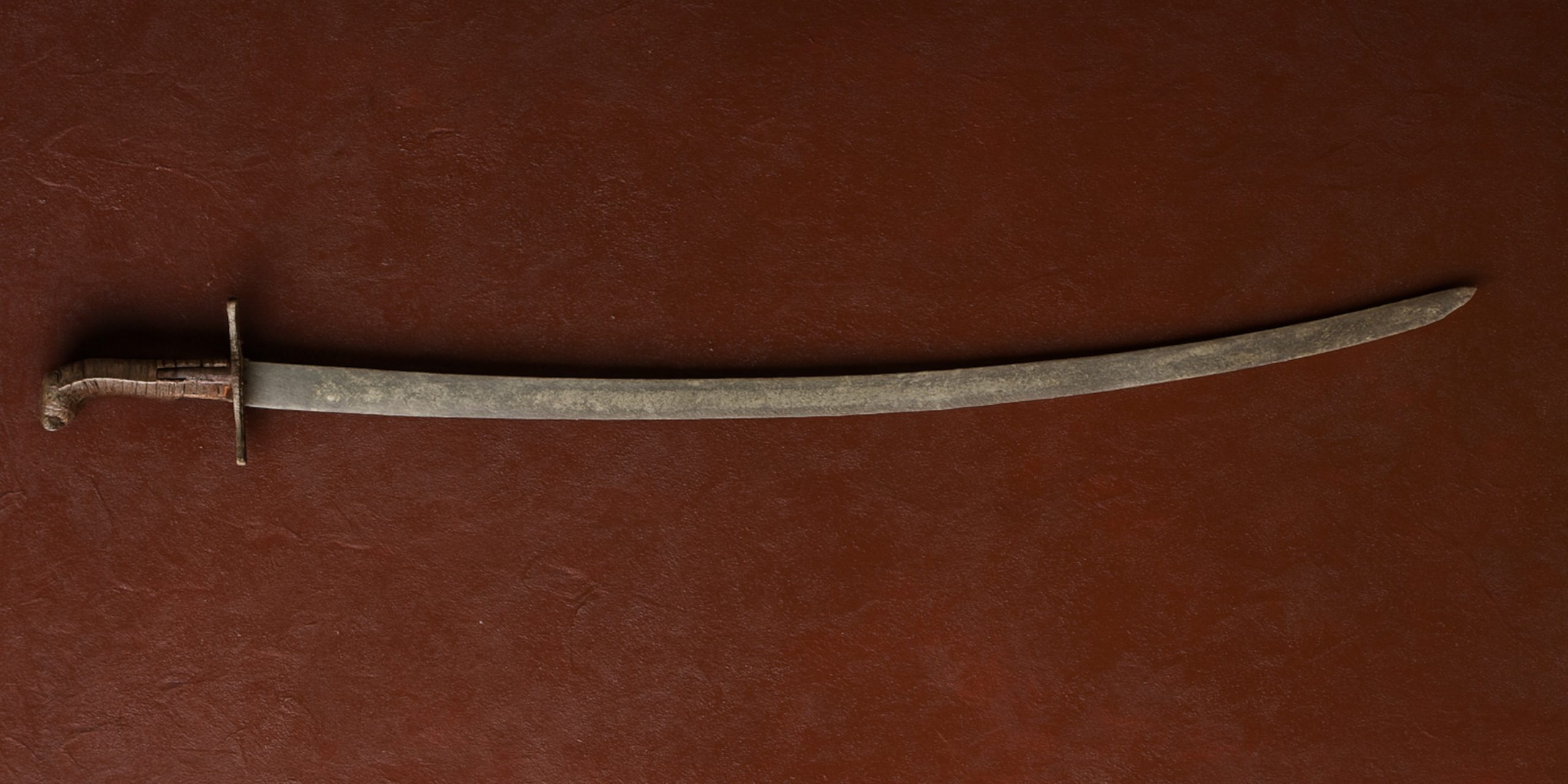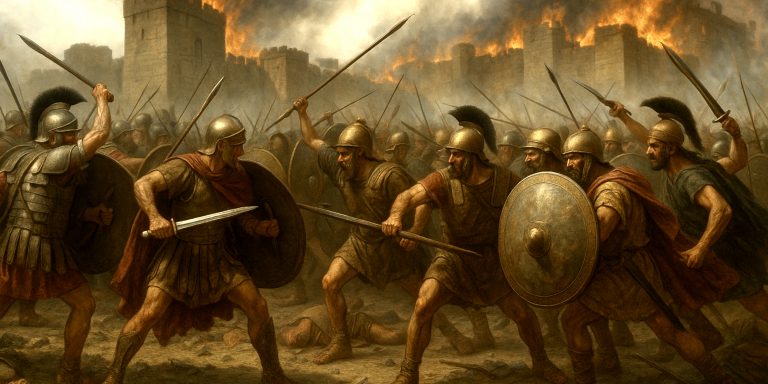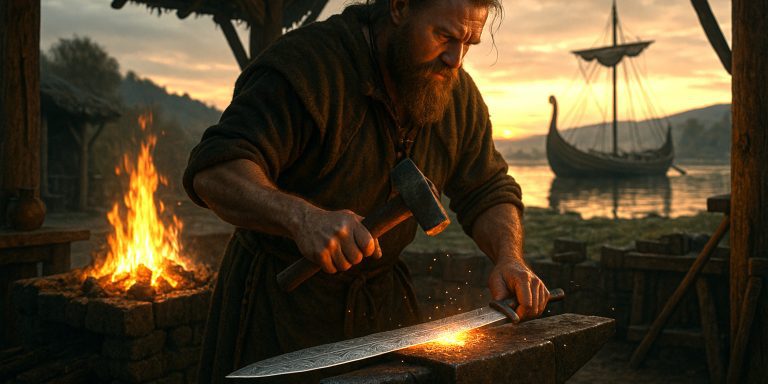
The Transylvanian sabre was a distinct regional weapon that emerged from the cultural crossroads of Central and Eastern Europe. Combining Hungarian, Ottoman, and Polish influences, it represented the hybrid martial identity of Transylvania during the 16th to 18th centuries. It was the sword of frontier soldiers, nobles, and hajdu warriors who lived in a region constantly shaped by shifting alliances and border wars. Elegant yet functional, the Transylvanian sabre became a symbol of both status and survival in a volatile age.
Specification
| Feature | Details |
|---|---|
| Type | Curved single-edged sabre |
| Origin | Transylvania (modern Romania) |
| Period | 16th to 18th centuries |
| Overall Length | 85–100 cm |
| Blade Length | 70–85 cm |
| Blade Curvature | Moderate, with pronounced back edge near the tip |
| Weight | Approx. 1.0–1.3 kg |
| Grip | Wooden or horn hilt, often covered with leather or wire |
| Guard | Typically cross-guard or knuckle-bow with quillons |
| Pommel | Often rounded or slightly flattened, sometimes engraved |
| Materials | High-carbon steel blade, brass or iron fittings |
| Use | Primarily cavalry and officer weapon |
History and Evolution
The Transylvanian sabre developed in an environment marked by warfare and cultural exchange. The Principality of Transylvania stood between the Ottoman Empire, the Habsburg Monarchy, and the Kingdom of Hungary. Each of these powers influenced local arms production.
- 16th century: Early forms resembled Hungarian sabres and Ottoman kilijs, with slightly curved blades ideal for mounted warfare.
- 17th century: Local craftsmen introduced decorative motifs and refined the guard design. The sabre became a marker of Transylvanian nobility and military rank.
- 18th century: The design became more standardised, with a focus on lighter and faster blades suitable for duelling and ceremonial use. Some models were exported or gifted to foreign dignitaries, spreading Transylvanian craftsmanship across Europe.
The sabre’s popularity declined in the 19th century as straight-bladed military swords became more widespread under Habsburg influence.
Advantages and Disadvantages
Advantages:
- Curved blade delivered effective slashing attacks from horseback.
- Lighter construction offered agility in both cavalry and personal combat.
- Distinctive balance made it responsive and easy to control.
- Decorative craftsmanship reflected the status of its owner.
Disadvantages:
- Less effective for thrusting compared to straight rapiers or spadroons.
- The light build limited penetration against plate or heavy mail armour.
- Regional manufacture led to inconsistent quality between smiths.
Comparison with Similar Weapons
| Weapon | Region | Key Difference | Comparison |
|---|---|---|---|
| Hungarian Sabre | Hungary | Slightly heavier, deeper curve | The Transylvanian version was more balanced for both cut and thrust. |
| Polish Szabla | Poland | More ornate and regulated military design | The Transylvanian sabre shared stylistic roots but was less standardised. |
| Ottoman Kilij | Ottoman Empire | Broad blade with pronounced yelman (flared tip) | The Transylvanian form had subtler curvature and narrower tip. |
| Austrian Hussar Sabre | Habsburg lands | Later standard military weapon | The Transylvanian sabre influenced early Habsburg patterns. |
Legacy
The Transylvanian sabre remains a symbol of the frontier spirit that defined the region. Its form influenced military sabres throughout Central Europe and contributed to the romantic image of the Eastern European cavalryman. Today, it is valued by collectors and historians as a representation of a culture that bridged East and West.
In folk art and iconography, the sabre often appears in depictions of Transylvanian nobles and warriors. It also features prominently in regional museums as an emblem of craftsmanship and identity.
Where to See
- National Museum of Transylvanian History, Cluj-Napoca, Romania – hosts several well-preserved examples from the 17th century.
- Hungarian National Museum, Budapest – displays sabres showing the shared evolution of Hungarian and Transylvanian designs.
- Vienna Museum of Military History, Austria – includes specimens captured or gifted during Habsburg campaigns.
- Private Collections and Auctions – Many sabres survive in private hands, often with ornate hilts and inlaid inscriptions.
Collector’s Guide and Auction Prices
| Category | Description | Typical Price Range (GBP) |
|---|---|---|
| Authentic 16th–17th century sabre | Museum-grade, often with noble provenance | £8,000–£20,000+ |
| 18th century officer’s sabre | Decorative, engraved fittings | £3,000–£8,000 |
| Later ceremonial reproductions (19th c.) | Often produced for display | £500–£1,500 |
| Modern replicas | For reenactment or decorative use | £150–£400 |
Collecting Tips:
- Verify provenance through documentation or previous sales records.
- Examine guard and pommel shapes, as reproductions often exaggerate curves or decorative elements.
- Look for regional maker’s marks or inlaid inscriptions in Hungarian, Latin, or Ottoman Turkish.
- Blades showing folded steel patterns (pattern-welding) are highly prized.
The Seven Swords Takeaway
The Transylvanian sabre encapsulates the martial artistry of a borderland civilisation. It was neither purely Eastern nor Western but a synthesis of both, reflecting the resilience and adaptability of those who wielded it. For collectors and historians, it offers a tangible link to one of Europe’s most complex cultural frontiers.



